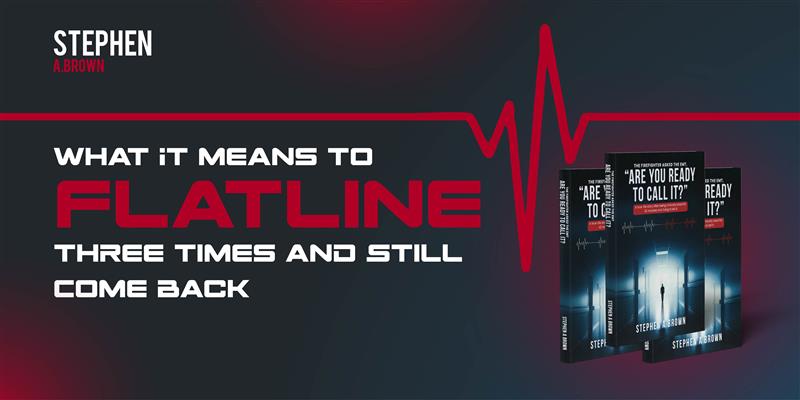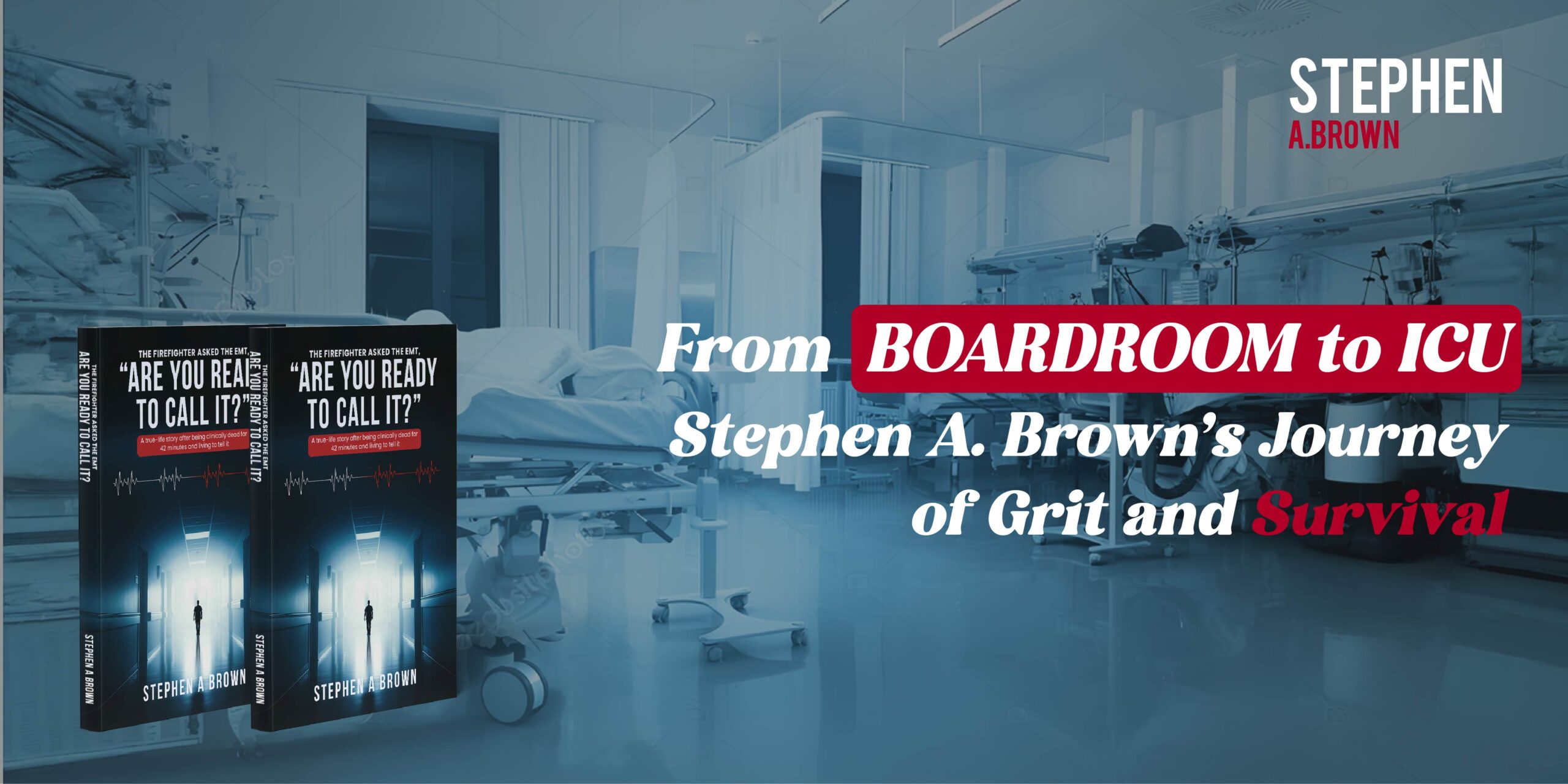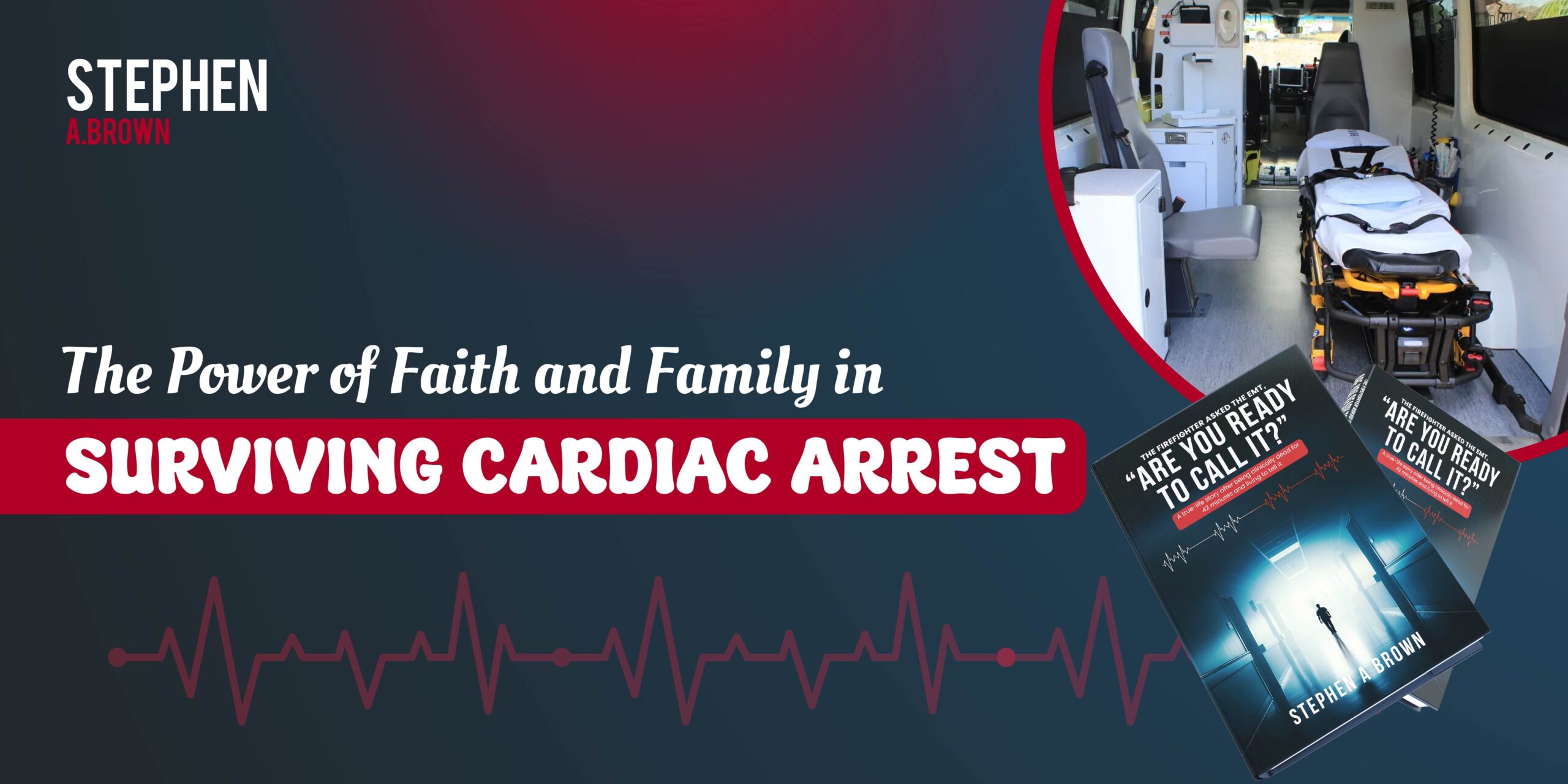Some stories shake you to your core. They don’t just tell you about survival; they make you imagine what it would feel like to be on the edge of life and then return. Stephen A. Brown’s account in his book Are You Ready to Call It? is exactly that kind of story. It’s about flatline survival, how he clinically died three times in his own home and somehow made it back.
The Night of the Collapse
On June 29, 2016, Stephen was doing what so many of us do on an ordinary evening, sitting in his recliner, watching baseball. Within minutes, his life changed completely. He collapsed without warning. No heartbeat. No breathing. His wife, Pat, found herself in a nightmare. She dialed 911 and started CPR on her husband of forty years.
She called 911 and began chest compressions on her husband of forty years, continuing to push his chest minute after minute until the first police officer arrived. Four minutes may not seem like long but, in a cardiac arrest, it seems like eternity. Soon, firefighters and paramedics joined in. They shocked Stephen six times. He flatlined three separate times. Each time, they fought to bring him back.
At one point, a firefighter asked the question no family ever wants to hear: “Are you ready to call it?” The lead paramedic answered firmly: “Not yet.” Those two words became the hinge between death and life.
Flatline Survival Against All Odds
Clinically, Stephen was gone. For 42 minutes, he had no sustainable pulse. In medical terms, that’s cardiac death. The odds of meaningful recovery after even a fraction of that time are slim. But through continuous chest compressions, medications, and sheer persistence, his rescuers kept oxygen flowing to his brain.
Flatline survival is more than just a medical anomaly. It’s proof of what happens when training, teamwork, and sheer willpower meet at the right moment.
The Family’s Waiting Room
While all this unfolded, Stephen’s daughter Stacey, a doctor herself, rushed to the house. She understood exactly how grave the situation was. She and Pat were kept in the other room while the responders worked. Imagine hearing only fragments: “no pulse,” “shock again,” “still not breathing.” Imagine knowing the person you love most might not make it to the hospital alive.
That’s what life after cardiac arrest begins with, not only for the patient, but also for the family. Fear, helplessness, and the faint glimmer of hope that someone will say, “We’ve got a pulse.”
Waking Up to a New Life
Stephen doesn’t remember the collapse. For the first four days in the ICU, he remembers nothing at all. Everything he knows about those hours and days comes from the journals his wife and children kept.
When he did begin to wake, he was disoriented. He asked the same questions again and again: Where am I? What happened? Why does my chest hurt? The truth was overwhelming; he had flatlined three times, and yet here he was.
Life after cardiac arrest is not simple. Recovery meant facing pain, memory gaps, and the sobering knowledge that his body had failed him once already. But it also meant discovering how strong his family was, and how many people had worked together to save him.
What Survival Really Meant
For Stephen, flatline survival wasn’t just about returning to life. It was about coming back with a new understanding of what matters. He admits he once pushed through health warnings, convincing himself that feeling “fine” was enough. That illusion vanished the night his heart stopped.
In his book, he writes about gratitude more than anything else, gratitude for his wife’s strength, for the paramedics who refused to quit, and for the simple gift of waking up the next morning. It’s not framed as a lesson list, but as a lived truth: survival reshapes your priorities. Ordinary things become precious. Time with family feels borrowed in the best sense.
That is the heart of his story. Flatline survival didn’t just return his heartbeat. It rewrote the way he looks at every day.
A Story That Stays With You
Stephen A. Brown’s flatline survival is not only a medical wonder, it’s a deeply human story. It’s about a wife who refused to give up, professionals who went beyond routine, and a family who held on through the darkest hours.
His book Are You Ready to Call It? is both a record of what happened and a love letter to those who stood by him. It reminds us that a near-death experience doesn’t always mean visions and mysteries; it can also mean the ordinary miracles of persistence, love, and hope.
To flatline three times and still come back is extraordinary. But to take that survival and turn it into a story that helps others? That might be the greatest gift of all.



